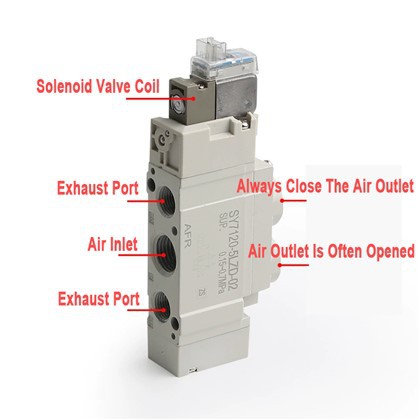1、 Nitrile rubber
Solenoid valves are made from emulsion polymerization of butadiene and acrylonitrile, mainly composed of low temperature emulsion polymerization. It has excellent oil resistance, high wear resistance, good heat resistance and strong adhesion. Its disadvantages are poor low temperature resistance, poor ozone resistance, poor electrical performance, and slightly low elasticity.
In addition, it also has good water resistance, air tightness and good adhesion performance. It is widely used in the manufacture of various oil resistant rubber products, various oil resistant gaskets, gaskets, sleeves, flexible packaging, hose, printing and dyeing cots, cable rubber materials, etc., and has become an essential elastic material in automobile, aviation, petroleum, copying, electronic and other industries. Other industries.
Nitrile rubber (NBR) has excellent oil resistance, second only to polysulfide rubber and fluororubber, with wear resistance and air tightness. The disadvantage of NBR is that it is not resistant to ozone and aromatic, halogenated hydrocarbon, ketone and ester solvents, so it is not suitable for insulating materials.
Main uses: NBR is mainly used to produce oil resistant pipes, tapes, rubber diaphragms, large oil bags and other oil resistant products, such as O-ring, oil seal, cup, diaphragm, valve, bellows, etc. Used for manufacturing rubber plate and wear-resistant parts.
2、 EPDM rubber
EPDM is a terpolymer of ethylene, propylene and unconjugated diene. It was commercialized in 1963. The world consumes 800000 tons a year. The main characteristics of EPDM are excellent oxidation resistance, ozone resistance and corrosion resistance. EPDM belongs to polyolefin and has excellent vulcanization performance. Ethylene propylene diene monomer (EPDM) has the lowest proportion in all rubbers. It can absorb a lot of filler and oil, and has little effect on its performance. Therefore, low cost rubber compounds can be produced.
Molecular structure and properties
Structure: ethylene propylene terpolymer is a terpolymer of ethylene, propylene and unconjugated diene. Dienes have special structures. Only one of the two bonds can be copolymerized. Unsaturated double bond is mainly used as crosslinking agent. Another unsaturated polymer is not a main chain, but a side chain. The main chain of EPDM is completely saturated. This property makes EPDM heat resistant, light resistant, oxygen resistant, especially ozone resistant. Ethylene propylene terpolymer is basically nonpolar, resistant to polar solution and chemicals, low water absorption and good insulation performance.
Features: 1. electrical properties; 2. elasticity; 3. adhesiveness; 4. low density and high fill; 5. superheater resistance; 6. water vapor resistance; 7. anti-aging property; 8. corrosion resistance.
3、 Fluororubber (FKM)
There are different types of fluorine-containing rubbers in molecules according to different fluorine content, namely monomer structure. At present, fluororubber containing hexafluoride system is the first time DuPont listed in the name of "fluororubber". High temperature resistance is better than silicone rubber. It has good chemical resistance, resistance to most oils and solvents (except ketones and esters), good weather resistance and ozone resistance, but poor cold resistance; it is widely used in locomotives, B and other products, and seals in chemical plants, with the service temperature ranging from - 20 ℃ to 260 ℃. When there is a low temperature resistant substitute, it can be applied to - 40 ℃ but the price is not good. Higher.






